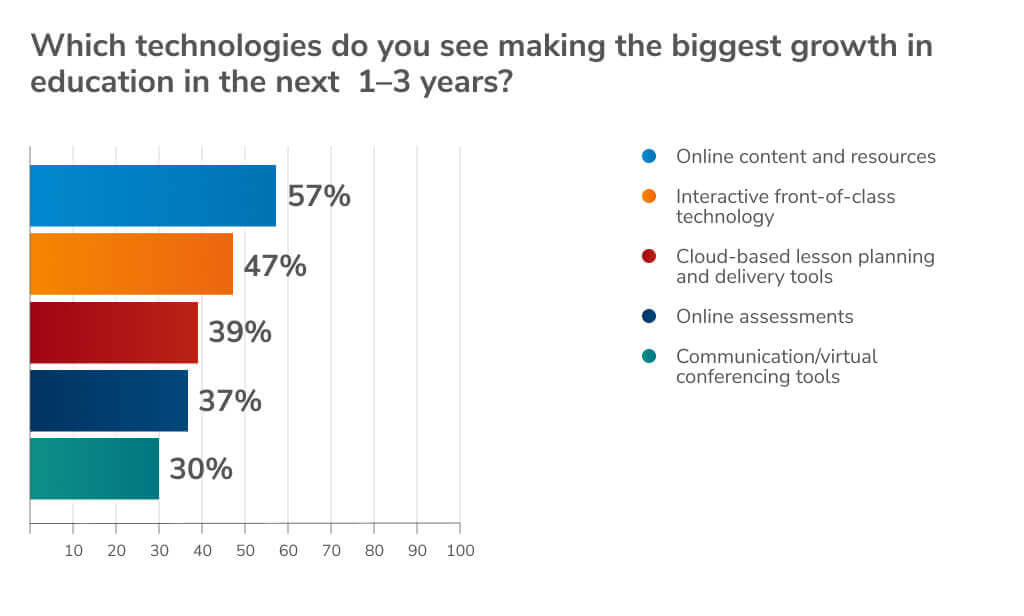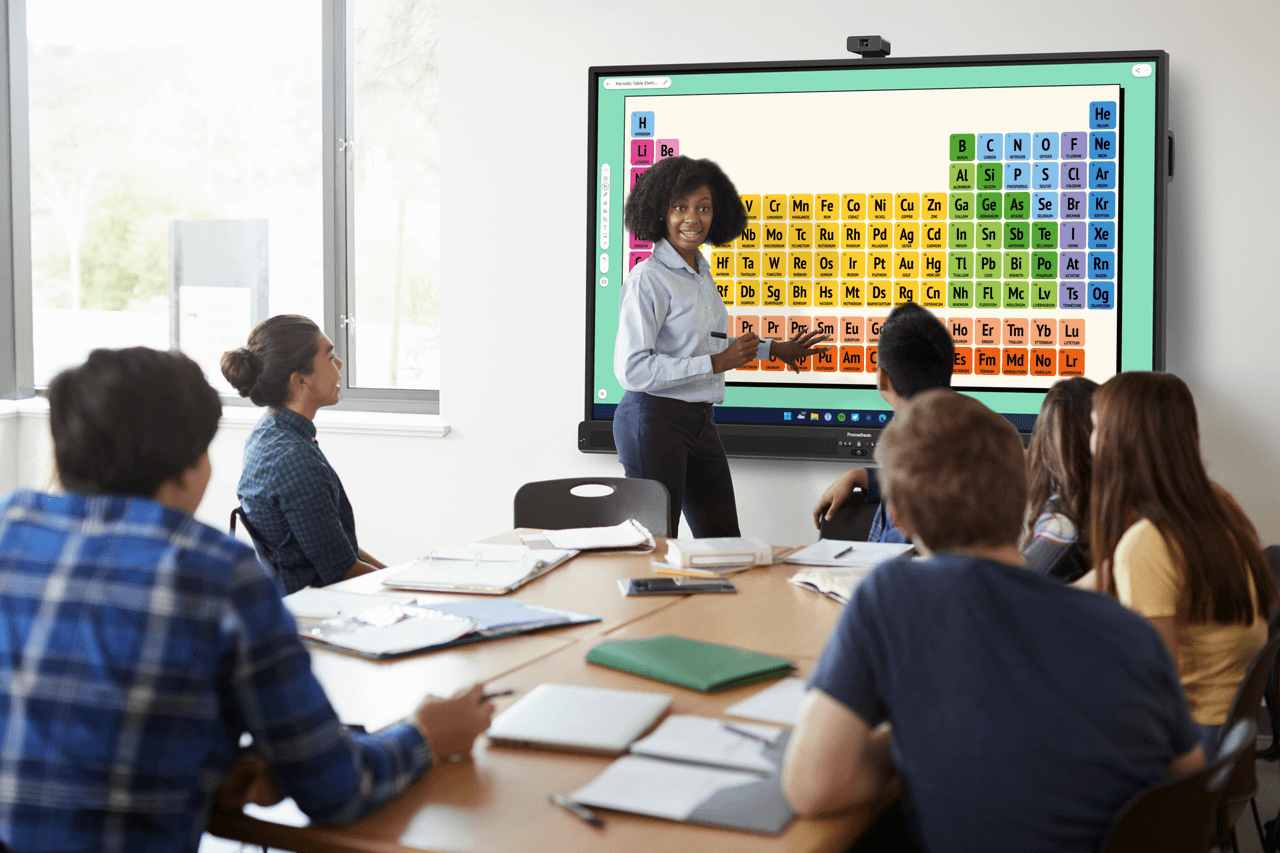Published on October 18th, 2021
Is hybrid learning still a strategic priority?
5 minute read

Hybrid learning was at the forefront of school strategy, but that’s changed. Find out the new top priority, and how to achieve it.
Hybrid learning has been hanging over education, shaping strategy and defining lesson delivery — so much so that educators wondered whether it’d subside. While schools largely feel more prepared for any future remote or hybrid periods, the classroom isn’t going anywhere — it’s just going in a more modern, digital-first direction. According to the 2021/22 US State of Technology in Education Report, 42% of educators predict that, in the future, all classes will be taught in person where possible, with a blend of digital and analog resources.
Facilitating hybrid learning capabilities has fallen to one of the lowest priorities this year, with strategy setters recognizing it’s not a long-term solution by itself. Equally, school strategy needs more than the staid techniques that no longer inspire today’s generation of students. Hybrid learning reminded some and showed others the value of integrating edtech into the most reliable traditional pedagogical approaches. So what do the latest school objectives reveal about how educators envisage the modern classroom?
A strategy for a future-proofed classroom
The classroom is the central environment for in-person interaction, where students can be supported more directly and personally, without distractions or disruptions. But it can still be made better. In-person teaching and learning became more impactful when it’s elevated by edtech — over 4 in 5 educators (83%) believe it’s a great way to engage students. With more teachers actively trying to innovate with tech, school leaders should provide purpose-built solutions with targeted features for meeting school goals.
“Although I strive to include technology in my instruction, lack of devices makes it difficult.”
Teacher, Public Elementary School, Florida
Goals like enhancing communication and collaboration are now the top tech priority, according to the report. No longer focusing on online assessments or hybrid learning, schools are looking for edtech that streamlines the learning process and student experience. Front-of-class tech like the ActivPanel, for example, offers interactive features to encourage active participation and engagement with lesson content. Tools like this represent the balance of both traditional and tech-based learning which will stand the test of time.

The benefits of the blended approach
Supplementing teacher-led lessons with versatile and dynamic activities caters to differentiated learning styles and engaging mixed-ability students. Additionally, with effective support and training, tech-enabled objectives can help reduce the staff burden — one of the greatest issues facing the future of education — as 83% believe edtech helps them do their job better. As well as tools to improve their own productivity, the blended approach enables them to pivot between techniques that align with evolving staff and student needs.
You’ll also inspire teachers, nurture their tech proficiency, and attract ambitious talent with tools incorporating the latest trends. With a specific tech strategy, you can plan, prepare, and equip your school to embed these benefits. You’ll then be able to map out your school’s current tech provisions, their efficiency, and track improvements. It all needs to be backed by sufficient budgets and training — to the right areas — to maintain growth, support staff with new tech onboarding, and continuously unlock value. Tools like the ActivPanel are proven to not only streamline teachers’ productivity but do so cost-effectively.
What else is important for school strategies?
The 2021/22 US State of Technology in Education Report breaks down schools’ top priorities, what’s helping achieve them, and their predictions for the future. To find out whether your strategy’s heading in the right direction, along with the latest trends, read the report now.




